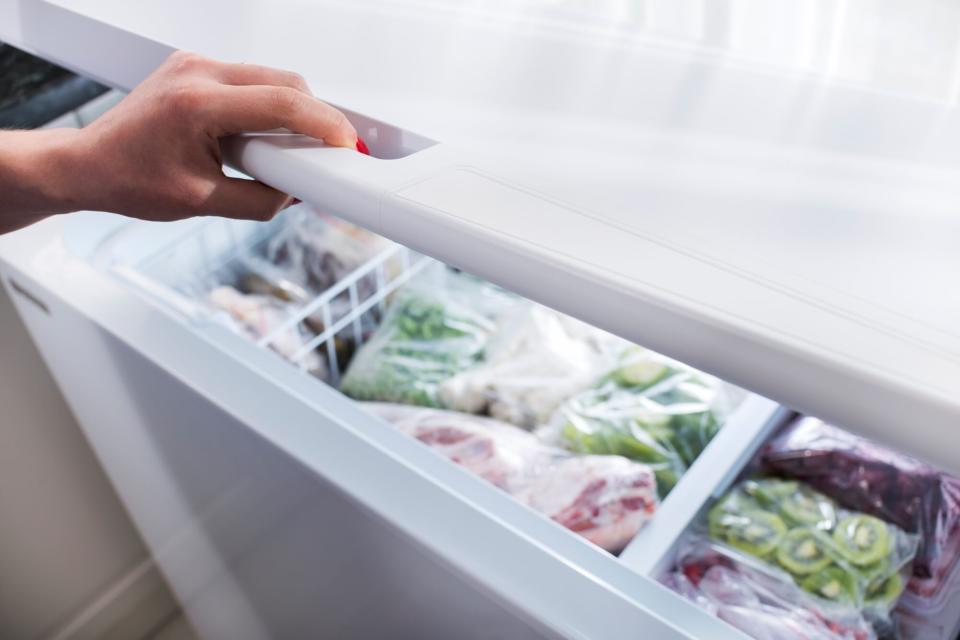Efficiently Organize Your Chest Freezer With These 5 Tips
If you have a deep freezer, also known as a chest freezer, you know how hard it can be to find an organizing system that works. Unlike a pantry or refrigerator, these types of freezers typically don't have built-in shelving, which makes it difficult for you to see your inventory. But with a few simple solutions and regular maintenance, you can easily streamline your deep freezer and make it a space you don't dread storing food in.

GETTY IMAGES
Take Everything Out of Your Freezer
The first step of any organizing project is to remove all of your inventory to better see what you have. Throw away anything that has too much freezer burn, as well as any expired products. This is also a good time to remove the items you'll be keeping from their bulky boxes to save room in your deep freezer.
Store Like With Like
Once you know what you have, group everything into broad categories—think meats, poultry, sweets, bread, and pre-made foods—instead of more specific ones, like marinated chicken. "If you get too specific, you will end up with too many bins when trying to find the one item you need," says Anne Gopman, a professional organizer and founder of Organized by Anne.
Another category to think about is frequency of use. Sort the heavier, less frequently used items, like proteins, out from the rest and place them on the bottom of your freezer. Foods you grab often, like frozen vegetables or snacks, should be at the top, where they can be easily accessed.
Keep Track of Your Inventory
To help keep your categories organized, consider getting a magnetic dry erase board to write down everything you put inside your deep freezer. "It's easy to move and adjust as needed and gives you the space to track items," says Gopman. "You will want to create a chart, noting your general categories and then the items, plus their quantities, on the whiteboard."
This also makes it easy to check a category and see what you're running low on without even having to open your freezer.
Store Items in Bins
A successfully organized chest freezer should make all items more accessible—and employing a few bins can help. "To get the most use of your space, I recommend using bins that are stackable and have a handle," says Gopman. "These will allow you to easily take the items from below out without having to lean over the freezer to do inventory."
Just make sure to measure your freezer before you order your storage baskets, as not all iterations will fit in all freezers. Make sure to label them and consider using a color scheme (a green bin for produce or a red bin for meats) to keep things even more organized.
Freeze the Right Types of Foods
Not all foods freeze well long-term—which is why you should start evaluating what you're adding to your stash. Meat and poultry, for example, both freeze well and last longer in your chest freezer than some of their counterparts. "Their texture stays the same and they can, for the most part, keep their fresh taste," says Jason Weiner, executive chef and co-founder of Almond Restaurants.
On the other hand, most types of fish (besides some fatty fish, like salmon) undergo a change in texture after defrosting. Also watch out for freezer burn, which happens when the items you freeze aren't wrapped appropriately. "Always plastic wrap, then put into a zip-top bag, and then in a container," says Weiner.

